When it comes to improving indoor air quality, the Lab Charge air purifier is one option worth considering. As someone who values clean air, I’ve found this product to be a solid choice for smaller spaces.
I purchased mine online through an e-commerce platform that specializes in home products, but you can also find it directly from the Lab Charge website or well-known online retailers.
If you’re looking for a compact and efficient air purifier, Lab Charge offers some of the best deals for those wanting cleaner air in their bedrooms, offices, or small living areas.
My Experience Using the Lab Charge Air Purifier
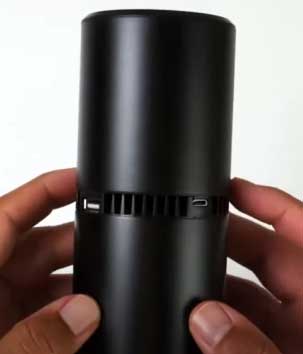
I initially bought the Lab Charge air purifier because of persistent allergies that seemed to flare up every morning.
I suspected dust was the culprit, and boy, was I right!
After dusting my room thoroughly, I decided I needed something to keep the air consistently clean.
The first night I used the Lab Charge air purifier, I woke up without the usual sniffles and sore throat.
That small change made a huge difference in my mornings, making me realize how much dust I was breathing in daily.
One thing that really stood out was how well it handled allergens and pet dander. I have a dog, and while she’s usually pretty clean, pets do shed. With the Lab Charge air purifier, I noticed a significant reduction in the amount of dust and fur in the air.
After a few months of use, I checked the filter, and it was almost black with dust—a clear sign that it was doing its job.
Pros of The Lab Charge Air Purifier
- Compact and Effective for Small Spaces
One of the best aspects of the Lab Charge air purifier is its compact size. It fits perfectly in small bedrooms, offices, or even a nursery. I keep mine next to my bed, and it never feels bulky or in the way.
However, keep in mind this is not meant for large rooms or open spaces. It’s built to clean smaller areas, up to about 150-170 square feet, so if you’re thinking of using it in a large living room or whole-house setup, you might be disappointed. For what it’s designed for, though, it excels.
- Easy to Use and Maintain
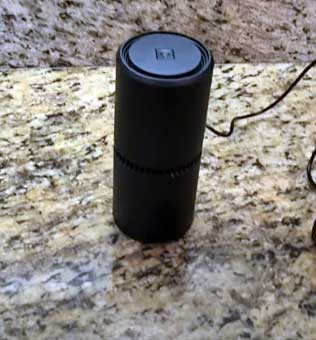
The touch-sensitive buttons on the Lab Charge purifier are intuitive and easy to use.
You can adjust the settings with a light tap, and even though the buttons make a sound, it’s a nice tactile feedback.
I set mine to the lowest setting at night, and the sleep mode works like a charm.
It dims the lights on the device, leaving only a faint glow, which doesn’t disturb sleep.
The maintenance is straightforward—changing the filter every few months, and that’s it.
The filter is relatively affordable and easy to replace.
- Excellent at Reducing Allergies and Odors
As someone who suffers from dust allergies, the Lab Charge air purifier has been a game-changer. My room feels fresher, and I no longer wake up with that uncomfortable sore throat. It’s also impressive at removing pet odors.
My dog often sleeps in my room, and the purifier eliminates any lingering smells. I was particularly impressed with its ability to neutralize odors without creating a “sterile” smell that some purifiers tend to produce.
- Quiet Operation
Another great feature is how quiet this purifier is. Even when it’s running at higher speeds, it’s not loud enough to be distracting. On the lowest setting, I barely notice it’s on, which is perfect for overnight use.
Whether I’m working or sleeping, it does its job quietly in the background, making the room feel noticeably cleaner.
Cons of The Lab Charge Air Purifier
- Limited to Small Spaces
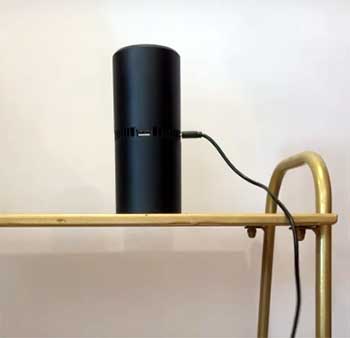
As I mentioned earlier, the Lab Charge air purifier is not built for large spaces.
It works wonderfully in small rooms, but if you need something for a larger area, you’ll have to look at more powerful models.
I initially tried to use it in my living room, which is about 400 square feet, and it didn’t make much of a difference.
It’s best suited for bedrooms, small offices, or other contained spaces.
- Button Sensitivity and Noise
The buttons are touch-sensitive, which is usually a good thing, but they are also a bit too sensitive at times. My dog once accidentally turned it off while sniffing around, which was annoying.
Additionally, while the buttons make a sound that I’ve come to appreciate during the day, it can be slightly jarring if you’re in a super quiet environment. If you need complete silence, this might be a minor issue.
- Filter Replacement Costs
Although the filters are easy to replace, they do need changing every 4-6 months, depending on how heavily you use the purifier. While not exorbitantly priced, it’s still an ongoing cost that adds up over time. It’s worth considering if you’re trying to budget for long-term maintenance.
Maintenance Tips For Lab Charge Air Purifier
- Replace Filters Regularly: The Lab Charge air purifier uses a HEPA filter that captures dust, allergens, and pet dander. For optimal performance, make sure to replace the filter every 4-6 months. It’s a quick and easy process that doesn’t require any tools.
- Keep It Clean: Every few weeks, I like to wipe down the exterior of the purifier to keep dust from accumulating. While the filter does most of the heavy lifting, the exterior can still collect some particles.
- Use in a Well-Ventilated Area: Although the purifier is effective at cleaning air in small spaces, I’ve found that placing it near a window or vent helps circulate fresh air better. This also prevents the room from feeling too stuffy, especially if you’re using it for long periods.
- Monitor Performance: If you notice the air quality isn’t improving as much as it did when you first bought the purifier, it’s likely time to change the filter. Keeping an eye on how it’s performing is essential to ensure it’s still working effectively.
Comparison With Other Brands
- Lab Charge Vs. Clarifion Air Purifier
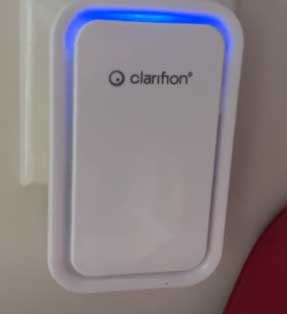
When comparing the Lab Charge air purifier to the Clarifion, the key difference lies in their filtration technologies.
Clarifion relies on ionization to clean the air, which means it emits negative ions that latch onto airborne particles, causing them to fall to the ground.
While this method can be effective in reducing dust and certain allergens, it doesn’t physically trap these particles like a HEPA filter.
In my experience, the Lab Charge, with its HEPA filter, did a better job at reducing allergens such as dust and pet dander, particularly in smaller, enclosed spaces.
Clarifion’s ionization approach might not be as noticeable for allergy sufferers, whereas the Lab Charge provided immediate relief from dust and pollen in the air.
Another aspect where Lab Charge outshines Clarifion is in odor elimination. Since I have pets, the Lab Charge’s ability to neutralize pet odors was particularly impressive.
On the other hand, Clarifion’s ionization doesn’t actively remove odors, which was a dealbreaker for me. If you prioritize allergy relief and odor control, Lab Charge stands as the more effective option.
- Lab Charge Vs. AROEVE Air Purifier
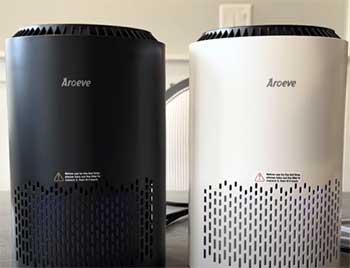
AROEVE is another popular option, and it’s quite comparable to the Lab Charge in terms of size and features.
Both use HEPA filters, making them efficient at trapping airborne particles like dust, pollen, and pet dander.
However, I found the Lab Charge to be slightly quieter than the AROEVE model I tried.
This makes Lab Charge a better choice for bedrooms or office spaces where noise levels matter.
In terms of design, AROEVE has a more modern, sleek appearance, but I found Lab Charge to be more intuitive and easier to use. The touch controls on the Lab Charge are simple, and the sleep mode works flawlessly, making it a perfect bedside companion.
While AROEVE also has a night mode, it wasn’t as seamless for me when it came to dimming lights and reducing noise.
Additionally, Lab Charge was more efficient at eliminating odors in my experience. While AROEVE did a great job with airborne particles, it didn’t quite match Lab Charge’s performance in keeping pet-related smells at bay.
If you have pets or need something specifically for odor removal, Lab Charge might be the better choice.
- Lab Charge Vs. iWave Air Purifier
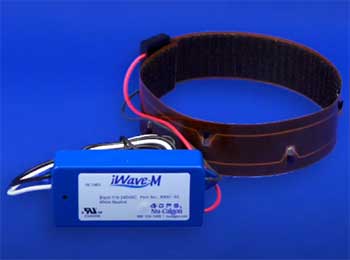
The iWave air purifier is in a different category because it’s an in-duct air purifier, meaning it integrates directly into your HVAC system.
While this is great for whole-house air purification, it’s not ideal for smaller spaces like a single bedroom or office where you need a localized solution.
In contrast, Lab Charge excels in personal spaces and smaller rooms, making it more convenient and effective for targeted use.
One of the advantages of iWave is its ability to cover a larger area, so if you’re looking for whole-house coverage, iWave is a good option.
However, the installation process and higher cost can be a drawback compared to Lab Charge, which is plug-and-play right out of the box. In my case, I preferred Lab Charge for its simplicity and portability—it’s a unit you can move around to wherever you need clean air the most.
Another factor is the type of particles each purifier targets. While iWave can reduce particles like dust, pollen, and smoke, it’s not as effective at handling odors unless you have an additional carbon filtration system installed.
Lab Charge, with its dedicated HEPA filter and odor-reducing capabilities, was better suited for my needs in terms of both particle and odor removal in a smaller, more confined space.
Frequently Asked Questions (FAQ)
The “best” air purifier depends on your specific needs. For small spaces and bedrooms, Lab Charge is an excellent option due to its quiet operation and effectiveness with allergens and pet odors. However, if you’re looking for purifiers for larger spaces, brands like Shark and Dyson offer more powerful units designed for bigger rooms.
Clarifion does work, but it uses ionization to clean the air, which may not be as effective as a HEPA filter for dust and dander. If you’re dealing with allergies or have pets, a HEPA filter-based purifier like Lab Charge might be a better choice.
One downside to air purifiers is that they require regular filter replacements, which can add up over time. Additionally, some models are noisy or ineffective for large spaces. It’s essential to choose the right size purifier for your room and change the filters as recommended to avoid any downsides.
HEPA air purifiers are generally safe to use, but they do have some minor drawbacks. Some people report dry throat or dry skin when running a purifier continuously, especially in very dry climates. Additionally, while HEPA filters capture most particles, they can’t remove gases or odors unless the unit also includes an activated carbon filter.
Conclusion: Should You Buy the Lab Charge Air Purifier?
If you’re in the market for a compact, quiet, and effective air purifier for small spaces, the Lab Charge air purifier is worth considering. It’s helped me reduce allergens and dust in my bedroom, providing cleaner air and a better night’s sleep.
While it’s not suitable for large areas, it’s perfect for bedrooms, offices, and other small rooms. You can easily find it on e-commerce platforms, and with regular maintenance, it’s a long-lasting solution for better air quality.
The Lab Charge air purifier isn’t without its flaws, but for the price and size, it’s a reliable option that delivers on its promises. Whether you have allergies, pets, or just want to breathe cleaner air, this purifier can make a noticeable difference in your daily life.
